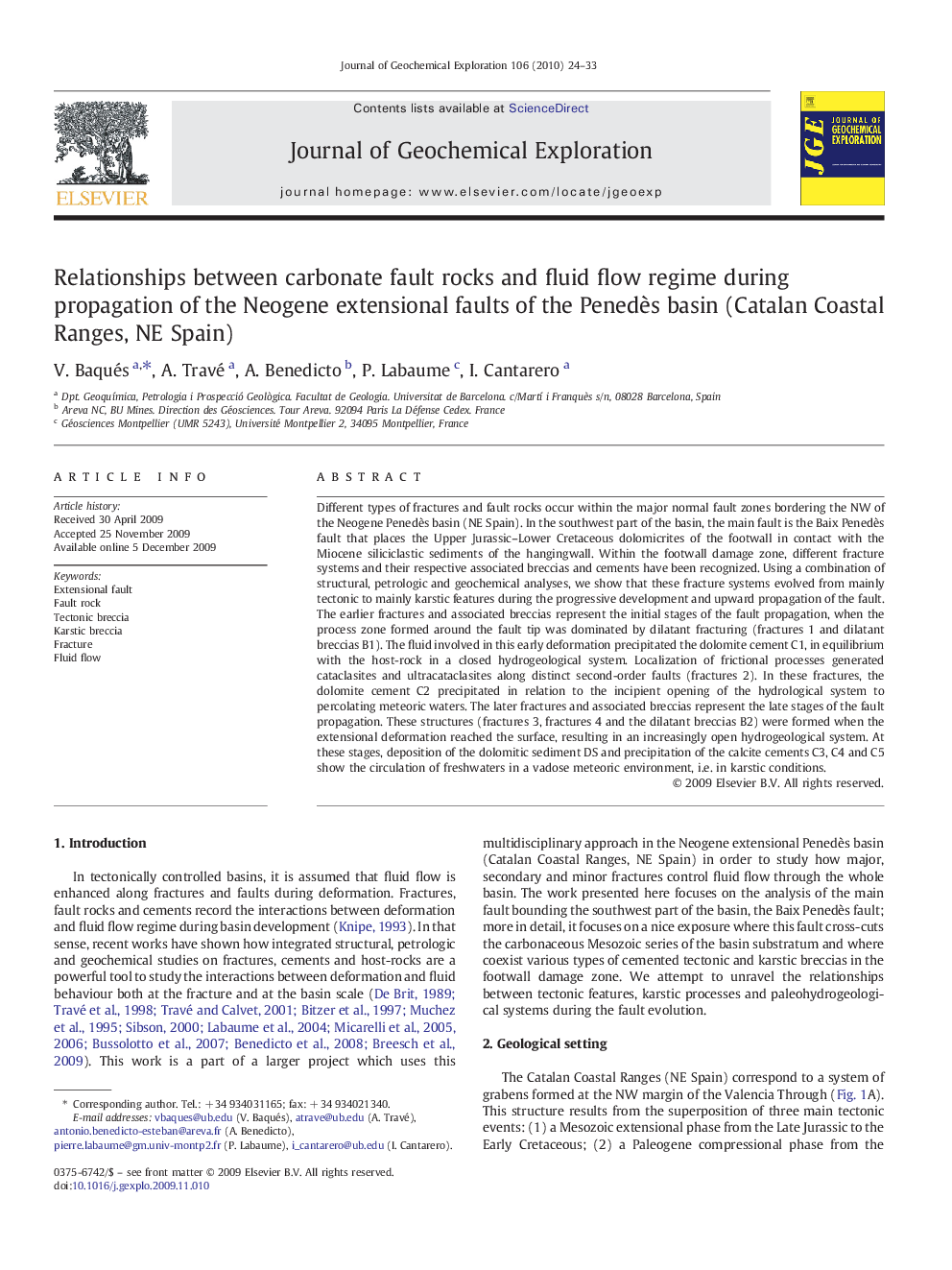| کد مقاله | کد نشریه | سال انتشار | مقاله انگلیسی | نسخه تمام متن |
|---|---|---|---|---|
| 4457996 | 1620946 | 2010 | 10 صفحه PDF | دانلود رایگان |

Different types of fractures and fault rocks occur within the major normal fault zones bordering the NW of the Neogene Penedès basin (NE Spain). In the southwest part of the basin, the main fault is the Baix Penedès fault that places the Upper Jurassic–Lower Cretaceous dolomicrites of the footwall in contact with the Miocene siliciclastic sediments of the hangingwall. Within the footwall damage zone, different fracture systems and their respective associated breccias and cements have been recognized. Using a combination of structural, petrologic and geochemical analyses, we show that these fracture systems evolved from mainly tectonic to mainly karstic features during the progressive development and upward propagation of the fault. The earlier fractures and associated breccias represent the initial stages of the fault propagation, when the process zone formed around the fault tip was dominated by dilatant fracturing (fractures 1 and dilatant breccias B1). The fluid involved in this early deformation precipitated the dolomite cement C1, in equilibrium with the host-rock in a closed hydrogeological system. Localization of frictional processes generated cataclasites and ultracataclasites along distinct second-order faults (fractures 2). In these fractures, the dolomite cement C2 precipitated in relation to the incipient opening of the hydrological system to percolating meteoric waters. The later fractures and associated breccias represent the late stages of the fault propagation. These structures (fractures 3, fractures 4 and the dilatant breccias B2) were formed when the extensional deformation reached the surface, resulting in an increasingly open hydrogeological system. At these stages, deposition of the dolomitic sediment DS and precipitation of the calcite cements C3, C4 and C5 show the circulation of freshwaters in a vadose meteoric environment, i.e. in karstic conditions.
Journal: Journal of Geochemical Exploration - Volume 106, Issues 1–3, July–September 2010, Pages 24–33